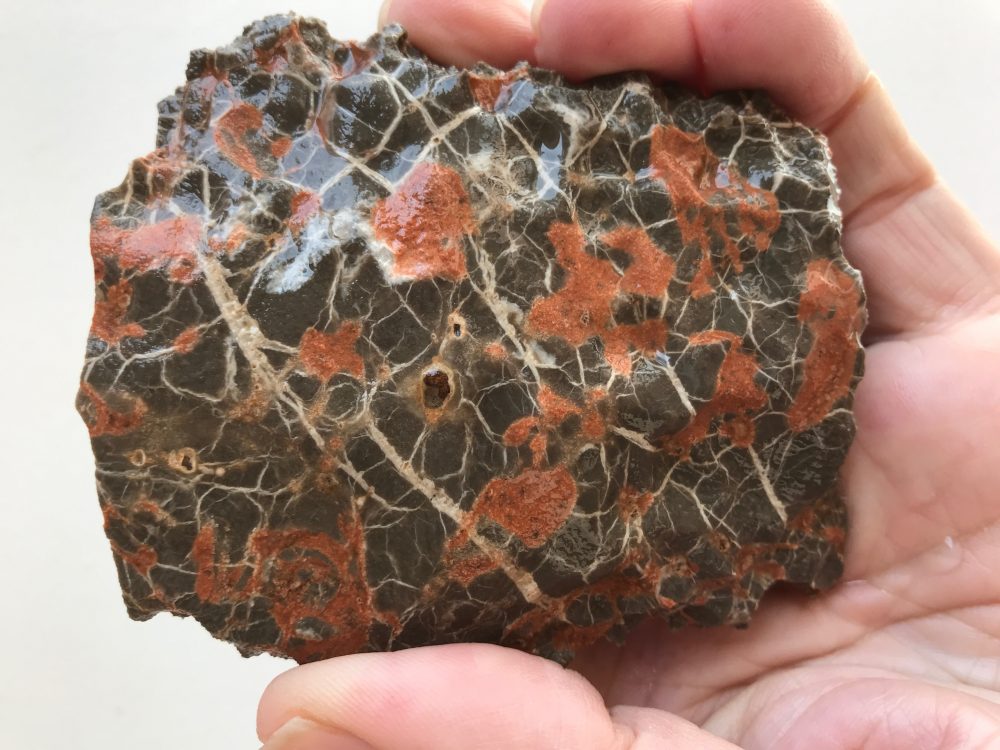Found this crazy looking piece on or near the east border of Gold Butte National Monument in Nevada, where limited, non-commercial collecting is allowed. In response to the photos I posted to Facebook, Joel Coombs on The Rockhound Connection responded, “I believe that rock is slightly metamorphosed limestone. I have found smaller pieces with the same colors. Put a drop of pool acid on it. If it effervesces it is limestone.” I did put some acid on the back of the rock and it did indeed fizzle. This all agrees with Jim Boone’s identification of plain looking limestone in the same location.
I found it on the side of the road, a dusty and dirty rock but one showing interesting markings. My spray bottle revealed what I thought might be great material for a cab or a slab. (If I wanted to do that since I rarely get around to lapidary.) A friend pointed out, though, that the red areas were rusty splotches, possibly iron or hematite related and that being soft would not easily cab up. Something like Superglue might be applied to those areas, then the whole piece sanded later on.
I decided to keep it as it was. A former rock shop owner suggested clear glossy spray lacquer which could always be sanded off later. The first picture is of the rock wet, the second is after three coats of spray, now dry. The third picture is of the untreated back. Given the ease of effort, I think the spray worked out well for this particular rock.
How did I find it? I was volunteering on Tuesday to help fill in potholes on Gold Butte Road, the somewhat paved road that provides the main access to the Monument. Right now, under the direction of The Friends of Gold Butte, many volunteers are helping out on this multi-day project. Clark County and BLM are also supplying workers and cold patch. I found the the rock on a break. But I had my spray bottle nearby. https://www.meetup.com/Friends-of-Gold-Butte/



